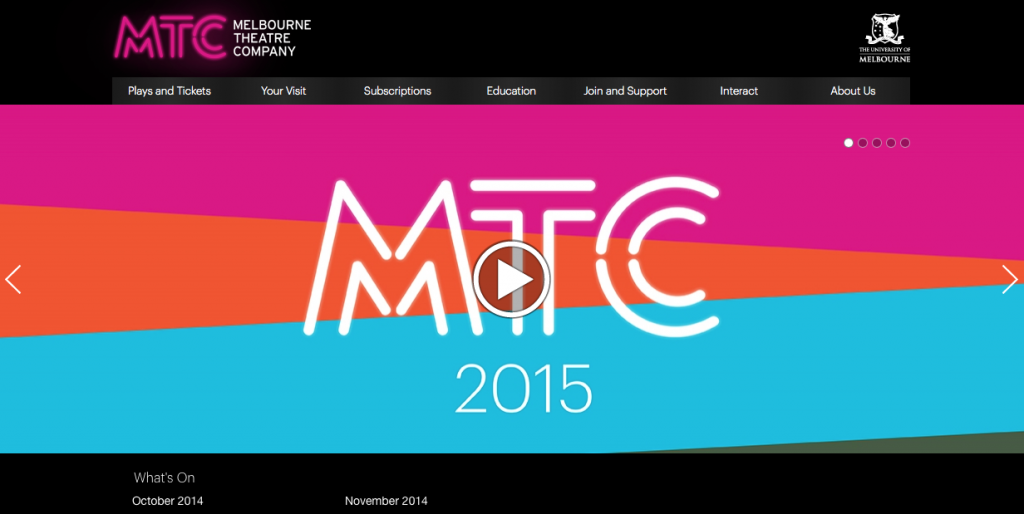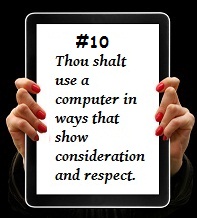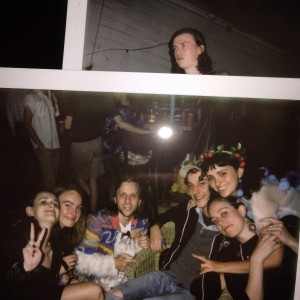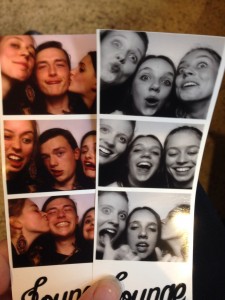Oopsies…. Late Blog 4
Today I ask the question – How is popular culture apart of our everyday life and who is involved?
The popular online and print magazine, Broadsheet, is a clear example of how popular culture plays a role in everyday life. People can subscribe and receive updates, read, watch and listen to information that is included in the magazine. Stacy Takacs states that one of the definitions of culture is that “it identifies culture as a process we participate in, rather than a static body of knowledge we possess (or fail to possess).” This magazine definitely forces the audience to participate, by linking websites that relate to the article, or including pictures and music which captivates the audience.
This idea of an online magazine that involves the audience and has articles which interest a wide range of people is becoming very popular. There are many other websites such as Pedestrian and Three Thousand. People spend much more time reading the news on the internet these days than reading a printed copy of the newspaper or magazines. However questioning who the people (audience) are of ‘popular culture’ and how we identify them can make things tricky… Do we have to group all ‘popular culture people’ together? Can’t they come from all different types of social groups yet still be engaged in some things that full under the popular culture category?
Takacs, S. (2015). Interrogating Popular Culture: Key Questions, “What is Popular Culture?” (Chapter One), Routledge: New York, pp. 1-17.
Creative Essay
We’re more and more into communications and less and less into communication.
Studs Terkel
Since a young age I have been involved with theatre and have a passion for it. In the beginning I wanted to be an actress, however after working backstage on various school productions I grew to love that side of theatre. When I began to write this essay I decided I wanted to explore the movement of theatre and how technology has an influence on it.
The art of theatre has been around since sometime during the 6th century BC, beginning in Greece. Since then, different traditions of performance have moved across the world being influenced by other cultures. Theatre creates a world that people can escape to. They can forget about reality for the time being, filling themselves with the stories that they are telling or are being told. Technology hasn’t always played a role in the art of theatre, however lately that has been changing, with more and more incorporation of the internet and technology being present.
Speaking to my mum about the influence of technology on theatre, she mentioned that she can now go onto the MTC homepage or other theatre company websites and watch trailers for certain plays. The trailers might be exactly like a film trailer, or it might give the viewer some insight to how the production is created, or what is happening behind the scenes. Instead of only reading a short synopsis on the play or wait until you are seated, about to watch the performance, the viewers are able to have a clearer understanding on what show they want to see and the workings of it. This is an element that has only been introduced in the past ten years, but it continues to grow.

A current play by the Malthouse Theatre’s 2013 female director-in residence, Roslyn Oades called Hello, Goodbye & Happy Birthday continues to utilise her ‘Headphone Verbatim & Audio Scripting’ that she is well known for. This technique was first introduced by British director, Mark Wing-Davey. On her website, Roslyn Oades, it states that since 2001, Oades has created performances using “carefully constructed audio recordings”. Her process involves an “extensive collection phase, during which she draws material from a variety of audio sources including interview, media and found recordings.” Throughout the performance, her technique entails the actors to wear headphones, in which they are fed an audio-script. The actors recite the script as immediately as possible, like a musician following a music score. This includes every stutter, cough, pause and stumble. The end result that Oades wishes to have, is “a hyper-natural form of documentary theatre that evokes the essence of the audio source with fidelity”, regardless of the gender, age, or race of the original speaker.
This technique is a direct example to how technology is becoming involved in theatre. Without it, the ‘Headphone Verbatim & Audio Scripting’ would not be possible. I have never seen a play that incorporates this technique, however I believe that it would be an incredible interesting and rewarding performance to watch. In an article written by Caroline Wake, titled The Politics and Poetics of Listening: Attending Headphone Verbatim Theatre in Post-Cronulla Australia, it states that audience members have said that the effect is “somewhere between acting, ‘being’, and possession.” As we can assume, being in the audience would be a different experience to being in the audience of a regular theatre show. Instead of completely connecting with the performers, the audience has to somewhat ignore the headphones yet know that they are a crucial part of the play.
In an article I read on The Guardian, the author Chris Willkinson questions whether the internet is killing theatre. He states that Michiko Kakutani believes that the internet has “helped create a culture with attention-deficit disorder in which people will ‘tweet and text one another during plays and movies, forming judgements before seeing the arc of the entire work’”. This is a fascinating idea because the common thought on using phones during a show is that it is rude to the performers. However with Kakutani’s view in mind, perhaps this will force the actors to work harder, capturing and maintaining the audience’s attention, knowing that in two seconds their attitude towards the show could potentially be influenced by a text message.

Theatre is no longer a controlled space. It is not just defined to the stage. It can be outside the room, through headphone or on the internet. All theatre has two elements that are the same – there are actors and there is an audience. However now that the internet is becoming a regular part of the theatre world, the way that the audience interacts with the actors may change. For example, on Mashable.com Joann Pan writes about New Paradise Laboratories which is a company based in Philedelphia in the United States. The ‘about’ page on their website states that they “imagine theatre as a visionary experience”. The companies connectivity coordinator, Katy Otto, says that NPL had a major interest in making theatre that would appeal to people who weren’t participating in theatre but were “heavily influenced by the internet.” In their production and presentation stage, they incorporate social media sites, letting the stories evolve from there and “it can be hard to decipher what’s real and what’s fiction” says Pan.
In 2011, NPL created a play called Extremely Public Displays of Privacy, in which the three acts were available online. Additionally, they included geolocation technology where a character from the play guided the audience member through a park. There was a forty five minute sound file that gave you the guided tour, or alternatively online audience members could go onto YouTube and take a virtual walk online. By allowing the audience to interact through the internet, it achieves exactly what Katy Otto desired. People can follow the plays story whilst sitting at home, or they can get out into the real world and continue to follow the story through headphones, however the final act of the play is performed in ‘real-time’ at a theatre in Philadelphia which brings everyone together to witness the end.
But what does everyone think about the influence of technology on theatre? Do theatre critics believe it is a good movement? Is it an expensive feature that doesn’t necessarily need to be incorporated? I believe that technology in theatre is an important element. It opens many more doors and gives the cast and crew opportunities to work in different fields and give the audience a performance they will never forget. There will always be positives and negatives in these situations yet people will learn to accept different thoughts and learn to trust that as long as theatre still exists, it will only to continue to grow and change.
BIBLIOGRAPHY
Roslyn Oades, Headphone Verbatim & Audio Scripting, viewed on the 20th of October 2014, http://www.roslynoades.com/Technique.html
Wikipedia, last modified on 22nd October 2014, History of Theatre, viewed on the 23rd October 2014, http://en.wikipedia.org/wiki/History_of_theatre
Chris Wilkinson, 1st April 2010, Noises Off: Is the internet killing the theatre show?, The Guardian, viewed on 18th of October 2014, http://www.theguardian.com/stage/theatreblog/2010/mar/31/internet-theatre-twitter-texting
Christophe Collard, 2014, Remediating New Media, Staging Hypertext, Hot Metal Bridge, published by Writing MFA Students at the University of Pittsburgh, viewed on the 20th of October 2014, http://hotmetalbridge.org/archivelinks/return-to-earth/remediating-new-media-staging-hypertext/
Joann Pan, 25th March 2012, Internet-Based Theater Company Lives Between Cyberspace and the Stage, Mashable, viewed on the 21st October 2014, http://mashable.com/2012/03/24/new-paradise-laboratories/
Wake C, 2014, The Politics and Poetics of Listening: Attending Headphone Verbatim Theatre in Post-Cronulla Australia, in Theatre Research International, Vol. 39, No. 2, p. 82-100
Wake C, 2014, Voices that Matter: Performance, Technology and Sociology in the work of Roslyn Oades, in Acts of Courage, by Roslyn Oades
IMAGES AND VIDEO
National Theatre Discover, 13th March 2014, A guide to creating verbtim theatre, YouTube, found on 23rd October 2014, https://www.youtube.com/watch?v=-a0qNEhCly4
Jim Napier, 2012, Texting during a movie encouraged by Washington movie theater!, Geektyrant, found on 23rd October 2014, http://geektyrant.com/news/2011/12/6/texting-during-a-movie-encouraged-by-washington-movie-theate.html
MTC, screenshot on 23rd October 2014, http://www.mtc.com.au
Peer Review
Symposium 12
The final symposium for the year, and potentially the final symposium for Network Media (emphasis on potentially because I still don’t really understand what’s happening with Media and Communications next year and whether or not subjects will still run).
Adrian spoke a lot about protocols. The difference between technological protocols and social protocols, how they overlap and Tim Berners-Lee’s protocol for the World Wide Web.
Online etiquette was also discussed, yet unfortunately as much as I tried to stay focused my mind started to drift to thinking about other things and what I was having for lunch so I didn’t get much from that discussion.
~Twenty~
On Saturday the 4th of October I turned twenty. The day began with opening of presents from my family and then to breakfast with a few of my friends at a great cafe in Prahran called St. Edmonds. I spent the afternoon with my mums side of the family at the auction of my uncles house, followed by a Vietnamese lunch in Footscray. In the evening I had dinner with my boyfriend and two friends on Carlisle st and then went to a friends 21st in the city.
Twenty feels no different to nineteen, however it’s pretty exciting that I am no longer a teenager.
Peer Review
Yinuo spoke about the trouble she has had with an overseas company stealing money from her bank account. Because of this she says that “high tech age is unsafe”, and when problems like these arise I wonder if she is right!
Monique talks about the recent news of former frontman of The Smiths, Morrissey, and his outlook of death.
And Simone deals with hay-fever and not falling on her dogs!
Symposium 11
DATABASE
That was the main focal point of this weeks symposium. At least that’s what I think it was. I tried so hard to stay attentive the whole way through but after about twenty minutes I realised that my mind had wandered somewhere completely off topic and I hadn’t been listening to much of the past discussion.
However, when Adrian began speaking about Design Thinking, I switched on again. He said that he believed we, as media students, should start looking at ourselves as designers. The importance of designers is readily growing, demonstrating the effect they have on our surroundings. Designers make, learn and engage with things that exist in the world. Designers are prepped to make things that will have an impact on the future. Designers have the ability to look forward.
~Coming Soon~
Oops
Just like Maddison, I too didn’t hand in my draft essay which would have given me a definite 5 extra marks… I was so set on doing it and handing it in but by Thursday night I hadn’t done enough so kinda sorta pretty much gave up. Whoops.
But hey, at least I have 600 words and I’ve started it! Now I just have to keep on top of it and begin to create an HMTL so I can work out what I want it to look like.





